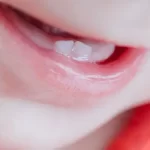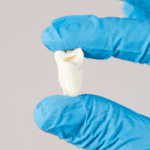When diagnosed with tooth resorption, most dental patients immediately think it’s something to be really worried about. While it may sound mysterious and scary, the good news is it can easily be treated, especially if treated early.
Tooth resorption is the most common cause of tooth loss, affecting 5 to 10% of Americans who have not undergone orthodontic treatments. If you find it early enough, you have a high chance of reversing it.
Here’s what you need to know about your diagnosis and what you can do about it.
What Is Tooth Resorption?
Tooth resorption is a common form of dental injury or irritation leading to the loss of a tooth or some of its parts. It can affect different parts of a tooth, which include:
- The cementum that covers the tooth roots
- The tooth roots
- Dentin
- Interior pulp
Resorption can happen internally in the tooth pulp or externally in the enamel or cementum. Sometimes, external root resorption and internal resorption coincide with tooth resorption usually begins outside the tooth and progresses inward.
Types of Tooth Resorption
Teeth resorption is classified as internal or external, depending on the location of lost tooth parts. Here’s a quick rundown of each type:
External Tooth Resorption
External resorption is the more common form of resorption. It affects any exterior part of the tooth, including the roots and cementum. It will often look like chips or deep holes on the teeth’s exterior, much like a cavity. Tooth roots experiencing resorption often appear on X-rays with shorter roots or flatter tips.
Internal Tooth Resorption
As the name implies, internal resorption affects the inside of the tooth. It’s less common than external resorption and more common in men. Heat or chemical exposure, trauma, bacterial invasion of the pulp, and extensive dental surgeries like tooth transplantation are some types of dental injuries that can lead to internal resorption.
Teeth affected by internal resorption will have their internal layers absorbed into the tooth root, hollowing it out. This makes teeth more susceptible to decay and damage, appearing with a reddish color.
Most people with internal resorption don’t even know they have it because it only affects the tissue inside the tooth. Dentists or dental hygienists often detect it on X-rays taken during a routine dental exam. Internal resorption will show up as dark spots in X-rays of affected teeth.
Tooth Resorption and Baby Teeth
Tooth resorption often signifies damage and trauma in adult teeth. However, it’s a perfectly normal process in primary or baby teeth. As children grow and develop, the roots of their baby teeth are reabsorbed, loosening them enough to fall out and make way for permanent teeth.
Resorption differs from bottle rot, a condition where a child’s tooth becomes stained with sugar from sugary liquids. This often happens when parents leave a bottle of formula milk with their children overnight.
What Causes Tooth Resorption?
Your body reabsorbs teeth for a variety of reasons. External resorption is often caused by mouth or teeth injuries from prolonged use of orthodontic appliances like braces, teeth grinding, or bleaching.
On the other hand, internal resorption is either caused by a physical injury to the tooth or swelling from an untreated cavity. Unfortunately, the exact causes of tooth resorption is not well-known or understood.
Tooth Resorption: Symptoms
Tooth resorption can present a variety of symptoms. Sometimes, it can go unnoticed for years and only develop symptoms once it worsens. Some tooth resorption symptoms you might notice include:
- Dark or pinkish discoloration
- Pain from the root, crown, and inside the tooth
- Cavity-like holes in the teeth
- Unusual spacing between teeth
- Red or swollen gums
- Fragile teeth that are easy to crack
Complications of Tooth Resorption
Some of the problems that result from tooth resorption include:
- Tooth weakness and discoloration
- Cavity-like holes
- Crooked teeth
- Chipped teeth
- Receding tooth roots
- Infections
- Pain
- Tooth loss
Tooth Resorption: Treatment
Dental resorption treatments focus on preserving any remaining tooth parts that have started to experience loss. It often involves the removal of any damaged parts to prevent further resorption. The severity of damage and the affected area of the tooth will determine the treatment you will need. Some treatments for resorption include:
Crowns
Dental crowns are not for treating tooth resorption but for strengthening and restoring teeth after tooth resorption treatments. They prolong the natural life of the tooth as long as it’s stable and the root remains healthy after treatment.
Gum Surgery
Periodontal surgery is a suitable treatment for patients with minor root or tooth resorption. It allows dentists to remove damaged cells to repair your tooth. They may also use composite fillings to repair your tooth after gum surgery. Sometimes, gently moving the gum tissue and tooth allows healthy tissue and bone regeneration in an orthodontic procedure.
Root Canal
Root canal therapy may be an option if your tooth has suffered significant resorption. The procedure allows your dentist to remove damaged tissue and preserve your remaining tooth structure. It’s particularly helpful for internal tooth resorption. The earlier your dentist diagnoses and treats it, the better the outcome.
Tooth Extraction
Tooth extraction is your dentist’s last resort. Dentists only use it for severe tooth loss and resorption. You can consider tooth replacement options like implants or dentures to restore your smile if your teeth are extracted due to tooth resorption.
Tooth resorption may also affect your teeth’s appearance. Some people use veneers or implants to replace any tooth their dentists have removed and give their smile a natural look.
Key Takeaway
Tooth resorption is a process where the body starts to reabsorb your tooth from the inside or outside. While it is a normal process in children to make way for permanent teeth, it is often a sign of tooth injury that can lead to permanent damage and tooth loss in adults.
Most patients don’t notice any signs of tooth resorption until it has progressed to a more severe stage, causing teeth to decay from the inside out. This usually leads to complications and causes permanent tooth loss if left untreated.
Regular visits to the dentist for cleanings and examinations are the best way to prevent dental resorption. This allows dentists to catch it early and prevent it from worsening with the right treatments.
Keep your teeth strong and healthy with Advanced Dental Group.
Advanced Dental Group is affiliated with the best dentists in Dillon. They provide preventive services that help keep teeth healthy, like routine checkups and cleanings. They also provide teeth replacements like implants and dentures. Call us, and we’ll connect them to you as soon as possible.





